 |
Picks is a monthly sampling of Japan's art scene, offering commentary by a variety of reviewers about exhibitions at museums and galleries in recent weeks, with an emphasis on contemporary art by young artists. |
 |
 |
|
|
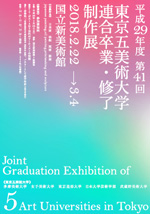 |
|
| Joint Graduation Exhibition of 5 Art Universities in Tokyo |
| 22 February - 4 March 2018 |
The National Art Center, Tokyo
(Tokyo) |
 |
| This year's show offered few works that merit passing marks. There was, however, one standout: a painting with views of the ground, above and below, on either side of the canvas, which was leaned obliquely against a wall so that both sides were visible. The front of a canvas is usually taken to be the side covering the wooden stretcher, but the stretcher frame on this one was ornamented with reliefs of plants, so that it could just as easily be viewed as a picture frame. The result was a reversible canvas in which frame and stretcher were interchangeable. A tip of the hat to the artist for this innovation. |
|
|
 |
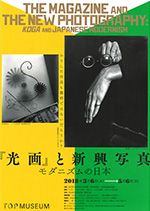 |
|
| The Magazine and the New Photography: Koga and Japanese Modernism |
| 6 March - 6 May 2018 |
Tokyo Photographic Art Museum
(Tokyo) |
 |
| The pathbreaking photography journal Koga published only 18 issues in the years 1932 and 1933, but it introduced some of Japan's most radical photographers of the day, 147 of whose works lined the walls of this show. For photos whose original prints were missing, the curators simply cut pages out of the magazine and framed them: so high were the publication's production standards that the difference is negligible. What makes this exhibition significant, though, is its scrutiny of the sociopolitical circumstances surrounding Koga's rise and fall, as well as that of the New Photography movement of the 1930s. |
|
|

|
 |
 |
|
 |
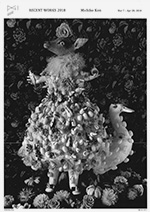 |
 |
| Michiko Kon: Recent Works 2018 |
| 7 March - 28 April 2018 |
PGI
(Tokyo) |
 |
| Photographer Kon first visited Mexico in 2016, and it’s not surprising she liked the country. Her use of fish, vegetables and fruit to create outlandish objects as motifs for her work has an obvious affinity with the magical realism associated with Latin America. In this show, which centered around works inspired by two subsequent visits, every image was a sublime union of vision and technique. |
|
|
|
|
|
|
|

|
 |
 |
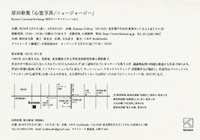 |
 |
| Yuki Harada: Spirit Photography / New Jersey |
| 9 March - 8 April 2018 |
Kanzan Gallery
(Tokyo) |
 |
| One frequently sees works that reconstruct, in an art context, "found" photos and other vernacular photography by anonymous shutter snappers. Such efforts often come off as superficial, but Harada takes the concept and makes real art of it. Spirit or psychic photography, which purports to render invisible phenomena visible, may be one of the more dubious offspring of "legitimate" photography, but Harada's take on the genre brilliantly upends conventional wisdom about the processes of photographic expression and appreciation. |
|
|
 |
 |
| Naoko Majima: Jigokuraku |
| 3 March - 15 April 2018 |
Nagoya City Art Museum
(Aichi) |
 |
| I first saw Majima's work in a collaborative installation with Tetsumi Kudo at Art Forum Yanaka in the late 1980s, and I remember thinking that her macabre objets dovetailed nicely with Kudo's work. But she did not really come into her own until the 1990s, when she began turning out an astonishing series of creepy-crawly pencil drawings. The only work capable of holding its own against Majima's might be Yayoi Kusama's early output. |
|

|
 |
 |
 |
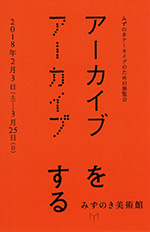
|
|
| Archiving the Archives |
| 3 February - 25 March 2018 |
Mizunoki Museum of Art, Kameoka
(Kyoto) |
 |
| The museum houses a vast collection of works created in art classes held between 1964 and 2001 at Mizunoki, a facility for people with disabilities that was a pioneering exponent of outsider art in Japan. This show examined the digital archiving process as chronicled by four artists working in different media. It proved to be a fascinating exercise in viewing the act of archiving from multiple angles, some challenging or contradictory, depending on the artist's perspective and mode of expression. |
|
|
 |
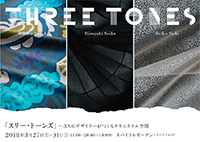 |
 |
| Three Tones |
| 27 March - 1 April 2018 |
Spiral Garden
(Tokyo) |
 |
| Compared to other design fields, the population of independent textile designers -- those not affiliated with a particular apparel or textile maker -- is relatively small. This joint presentation by three of Japan's top textile designers, Masaru Suzuki, Hiroyuki Seike, and Reiko Sudo, demonstrated the diversity of textile use in everyday life beyond clothing, shining a well-deserved spotlight on a unique profession and its creations. |
|
|
|
|
|
|
|
|
|
 |
|